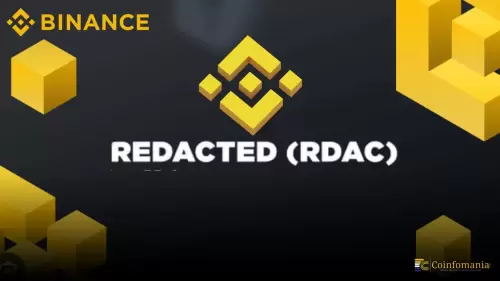 |
|
 |
|
 |
|
 |
|
 |
|
 |
|
 |
|
 |
|
 |
|
 |
|
 |
|
 |
|
 |
|
 |
|
 |
|
Cryptocurrency News Articles
Solana Co-Founder Proposes Meta Blockchain to Unify Ethereum, Celestia, and Solana for Optimal Data Efficiency
May 13, 2025 at 02:30 pm
Solana co-founder Anatoly Yakovenko has introduced a new concept dubbed the “Meta Blockchain,” aimed at optimizing data availability (DA) across multiple blockchain ecosystems.

Solana co-founder Anatoly Yakovenko has put forth an interesting concept called the "Meta Blockchain" to efficiently unify data availability (DA) across different blockchain ecosystems.
Essentially, Yakovenko envisions a scenario where any chain—be it Ethereum, Celestia, or Solana—can post data, which is then merged into a single, orderly stream using predefined rules.
As explained by Yakovenko, this Meta Blockchain would reference the latest block headers from each DA layer, enabling transactions (MetaTXs) posted on one chain to remain properly ordered relative to the others.
This implies that a MetaTX on Solana would include the most recent observed blocks from Ethereum and Celestia, collectively ensuring consistent transaction sequencing.
The implication is that users could select the most cost-effective and fastest DA layer at any given moment, drastically reducing operational costs.
“If we can make data availability cheap, we can make everything else cheap,” Yakovenko remarked, emphasizing bandwidth as the primary bottleneck.
The approach minimizes reliance on centralized sequencers by using deterministic merge rules to order transactions across chains.
While Toly acknowledged a simpler variant might involve external sequencing, he highlighted that a decentralized merge rule spanning all chains would better preserve trustlessness and interoperability.
The Meta Blockchain idea aligns with the industry’s broader push for modularity and scalability—offering a glimpse into a future where chains interoperate more seamlessly, with users empowered to transact anywhere, at minimal cost.
Disclaimer:info@kdj.com
The information provided is not trading advice. kdj.com does not assume any responsibility for any investments made based on the information provided in this article. Cryptocurrencies are highly volatile and it is highly recommended that you invest with caution after thorough research!
If you believe that the content used on this website infringes your copyright, please contact us immediately (info@kdj.com) and we will delete it promptly.
-

-

- Here’s Why Stellar (XLM) Could Explode Into the Top 10 Cryptos – Expert Drops Shocking News
- May 13, 2025 at 07:15 pm
- Stellar (XLM) might finally be getting its moment. In a YouTube video by NCashOfficial with 207K subscribers, the expert makes a bold claim that XLM could be on the verge of a breakout, both in price and adoption.
-

-

-

-

-

-

-






















![Bitcoin pulls back! Is the opportunity to get on the bus? Ether currency has made a fake breakthrough, and altcoins have plummeted! [It is recommended to watch at 1.5X times faster] Bitcoin pulls back! Is the opportunity to get on the bus? Ether currency has made a fake breakthrough, and altcoins have plummeted! [It is recommended to watch at 1.5X times faster]](/uploads/2025/05/13/cryptocurrencies-news/videos/bitcoin-pulls-opportunity-bus-ether-currency-fake-breakthrough-altcoins-plummeted-recommended-watch-x-times-faster/image_500_375.webp)




































